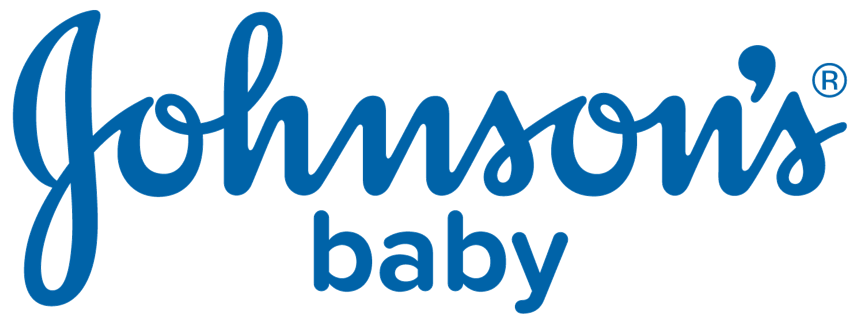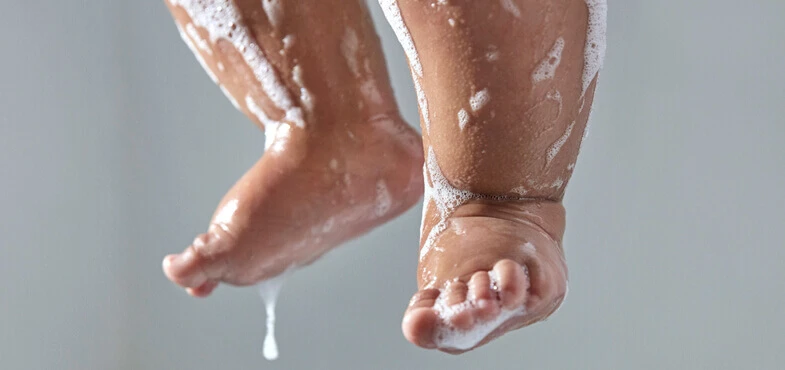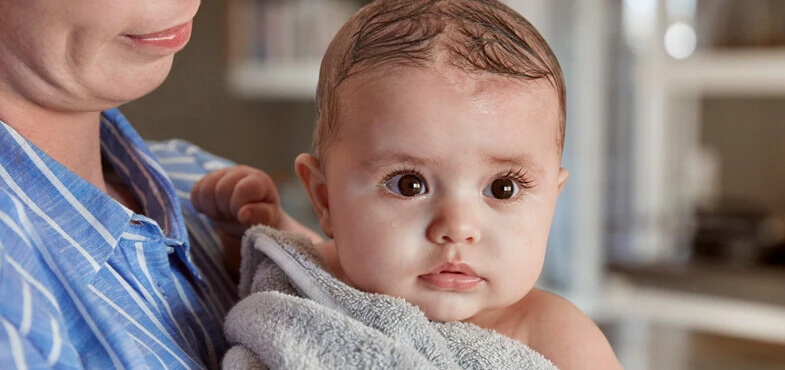How to bathe a newborn baby
Bathtime is an important time, as bathing your newborn is about more than just hygiene and cleanliness1. Like many activities in these early weeks and months, it’s an opportunity to strengthen the bond between you and your baby1.
When that first bath time comes, there’s a lot for parents to consider, from what products you need to use to the perfect bath temperature and depth. However, for your newborn’s first bath, it’s best to stick to a few tried and tested tips, including:
Check your baby is awake, and the room you’re using is warm1
Your baby’s bath should be around 37 and 38C2 – make sure you mix the water well to avoid hot patches1
Fill the bath with two to three inches (around 5-7cm) of water – this is usually deep enough for a newborn3
Ask someone else to fetch anything you forget so you can always stay with your baby4
Use one hand to support your baby’s head and neck while you bathe them5
Start with their face and gradually move down the rest of their body5
Keep bathtime short and always bathe your baby in a warm room so they retain their body heat6
If you’re bathing your newborn while their umbilical cord stump is still attached (this will fall off any time between around five and 15 days after birth7) it’s best to avoid getting it wet7. Sponge bathing may be the best method for keeping your little one clean in their first couple of weeks.
How often should you bathe a newborn?
Babies don’t move around too much in their first few weeks, which means they won’t get too dirty and won’t need bathing every day6. However, if they enjoy it and don’t seem stressed by the experience, then there’s no reason you can’t give them a daily bath5.
Generally speaking, you should aim to bathe your baby two to three times a week6, making sure you keep them clean in between by regularly cleaning their face, head and neck with cotton wool pads and their bottom with baby wipes after a nappy change.
Newborn bath temperature – how warm should it be?
Ideally, you should keep your newborn’s bath temperature around 37C to protect their skin, which is much thinner and more sensitive than an adult’s2.
Check the temperature with your elbow or hand and be sure to swill it around with your hand first to make sure there are no hotspots before putting your baby into the water2.
When to bathe a newborn baby?
Your baby shouldn’t be given a bath straight after they’re born as they need to stay warm8. But don’t worry, the nurses will have given them a good clean8.
Many parents prefer to give babies a while to get used to their new surroundings, so will just give them what’s known as a top and tail bath the first few times5.
How to top and tail wash your baby5
Hold your baby on your lap or lay them down on a changing mat. You can strip them down to their vest and wrap them in a towel to keep them warm.
Dip a ball of cotton wool in warm water, but don't get it too wet, and gently wipe from your baby's eyes, nearest their nose, and work outwards. Use a fresh piece of cotton wool for each eye.
Take another new piece of cotton wool to clean around your baby's ears - don't clean inside them.
Use the same method to wash the rest of their face and neck, working your way down from the forehead.
Dry their face gently but thoroughly with a soft towel.
Remove their nappy and clean their bottom and genital with a fresh cotton wool ball and warm water.
Dry them very carefully, take extra care to dry between any folds of skin, and put them in a clean, dry nappy.
What you’ll need for your newborn’s first bath
Before you give your baby their first bath, there are a few things you’ll need and some things to remember. It’s also important to take care whenever your baby is in the bath and never leave them unattended, even for only a few seconds5.
Suggested things you’ll need for baby’s first bath5:
Baby bath
Soft towel
Wash cloth or sponge
Cotton pads
Jug for pouring water
A gentle baby wash such as JOHNSON’S® Top to Toe Baby Wash or JOHNSON’S® Cottontouch™ 2 -in-1 Bath & Wash
Clean nappy
Changing mat
Change of clothes
Bathing your newborn: Step-by-step5
Bathing your newborn needn’t be a difficult experience and once you’ve done it a couple of times it will feel like it’s second nature. Follow our simple guide for a bathtime that should be easy and stress-free for both you and your baby.
Lay everything you’ll need out next to the bath so you can easily reach it.
Pop your baby bath inside your bath to reduce splashing.
Fill the bath with about three inches of lukewarm water. It’s important to keep the water cool enough that your baby won’t get scalded, but hot enough that it keeps them warm, so 37C is often considered the best baby bath temperature.
Test the water temperature before you put your baby in. Traditional methods such as using your wrist or elbow can be a good indicator, but a thermometer is a useful way to ensure you get it spot on.
Gently lower baby into the water to let them get used to it and support their head and shoulders with one arm at all times when bathing.
Start by cleaning your baby’s face with a washcloth or cotton wool.
Wash their hair and body gently. Ideally you should just use water for the first month5. After that you can start using a gentle soap like JOHNSON’S® Top to Toe wash or JOHNSON’S® Cottontouch™ 2 -in-1 Bath & Wash and a clean, soft cloth. Rinse off using a jug and clean water. It’s worth washing hair at the end of bathtime so baby doesn’t get cold.
Carefully swish the water around your baby without splashing.
Be sure to pay special attention to the creases and folds in their skin where dirt can easily get trapped.
As soon as they’re out of the bath, wrap your baby in a soft towel to keep them warm and dry them gently as soon as you can, patting them dry, starting with their hair and face.
After a bath is a great time to give your baby a massage with a gentle moisturiser such as JOHNSON’S® baby lotion or JOHNSON’S® Cottontouch™ Face & Body Lotion to keep their delicate skin smooth and soft.
When to wash newborn hair for the first time
You can wash your baby’s hair when they take their first bath – if they have hair by that time5. Otherwise just gently wash their head with plain water5. Gently massage their scalp with plain water, or baby shampoo if you prefer9.
You shouldn’t need to wash their hair any more than once or twice a week9. If they have cradle cap you might choose to wash their hair more often in order to keep it clean9.
How to clean your newborn’s ears
Your baby’s ears will be very sensitive, so be gentle when cleaning them and take care to never put anything inside their ears5. Use a damp cotton pad to wipe around the outside and gently remove any dirt or excess wax5.
Where to bathe your baby
Most people will buy a smaller baby bath that they can put on the bathroom floor or inside their own bath, but the most important thing is to make sure both you and your baby are comfortable.
Bathing your newborn in a baby bath. While your baby is still small, bathing them in a baby bathtub can be the easiest option as they’re often shaped to help support your baby’s head10.
Using a full-sized bath. Using a full-sized bath can be a bit trickier until your baby is big enough to sit up properly and support themselves, usually at about six months old3.
Sink bath. Bathing your baby in the sink is an old tradition, but just take care if you choose this option. Always remember to turn the tap away to avoid injury and use a foam insert or soft towels on the bottom of the sink to make it more comfortable for them.
For more tips for bathing your baby, head to the JOHNSON’S Bathtime hub, where you’ll find more information around making the most of bathtime.
Is water enough for my baby’s bath?
For the first month, plain water is recommended for your baby’s skin5. After this, you should start to use a gentle cleanser, as water doesn't remove the fat-soluble impurities left behind under nappies and clothes. If they remain, they can cause the delicate skin barrier to break down. And hard water alone can actually dry your baby’s skin11.
A gentle baby specific cleanser like JOHNSON'S® TOP-TO-TOE® Wash is recommended to help cleanse effectively because it:
• Removes impurities including fats and oils
• Provides mild and gentle newborn care
• Is suitable for use from day 1
• Is formulated to minimise the risk of allergies
• Is pH skin neutral
Discover [our full range of baby skin and hair products](Link: https://www.johnsonsbaby.co.uk/baby-products) to find the perfect one for your newborn.
Bathing your baby FAQs
Can I share a bath with my baby?
Co-bathing with your baby is a good way to bond with them and could help keep them calm5. Get in the bath first and make sure you’re comfortable, then get your partner or another relative to pass you the baby and lie them against your legs while you wash them4. You can then cuddle them against your chest for a bit of bonding time4.
How to calm newborn during bath
Talking to your newborn during bath time and telling them what you’re doing can help calm them5. The more they hear your voice and what you’re saying, the more they’ll understand what’s going on5. You could also try bathing with them and holding them against your chest4.
About this article
This article has been written using information from expert sources including the NHS and the National Childbirth Trust. A list of sources can be found below. However, this information should not replace expert medical advice.
https://www.nhs.uk/conditions/baby/caring-for-a-newborn/washing-and-bathing-your-baby/
https://www.mkuh.nhs.uk/patient-information-leaflet/care-of-the-umbilical-cord
https://www.nct.org.uk/baby-toddler/everyday-care/bathing-your-baby
2 https://www.healthline.com/health/baby/baby-bath-temperature
3 https://www.healthline.com/health/parenting/how-to-bathe-newborn
4 https://www.nct.org.uk/baby-toddler/everyday-care/bathing-your-baby
5 https://www.nhs.uk/conditions/baby/caring-for-a-newborn/washing-and-bathing-your-baby/
6 https://www.babycentre.co.uk/a536765/when-can-i-give-my-newborn-a-bath
7 https://www.mkuh.nhs.uk/patient-information-leaflet/care-of-the-umbilical-cord
8 https://www.healthline.com/health/baby/how-often-should-you-bathe-a-newborn
9 https://www.babycentre.co.uk/a553837/bathing-your-newborn
10 https://www.babycentre.co.uk/a559757/buying-a-baby-bath-or-bath-seat
11 https://www.babycentre.co.uk/x1003005/is-water-only-best-for-bathing-my-baby
JOHNSON'S®Pioneering Safety and Science in Baby Care
We are committed to working with Parents, Healthcare Professionals and Scientists to ensure our baby products continue to deliver high standards of safety and care.




